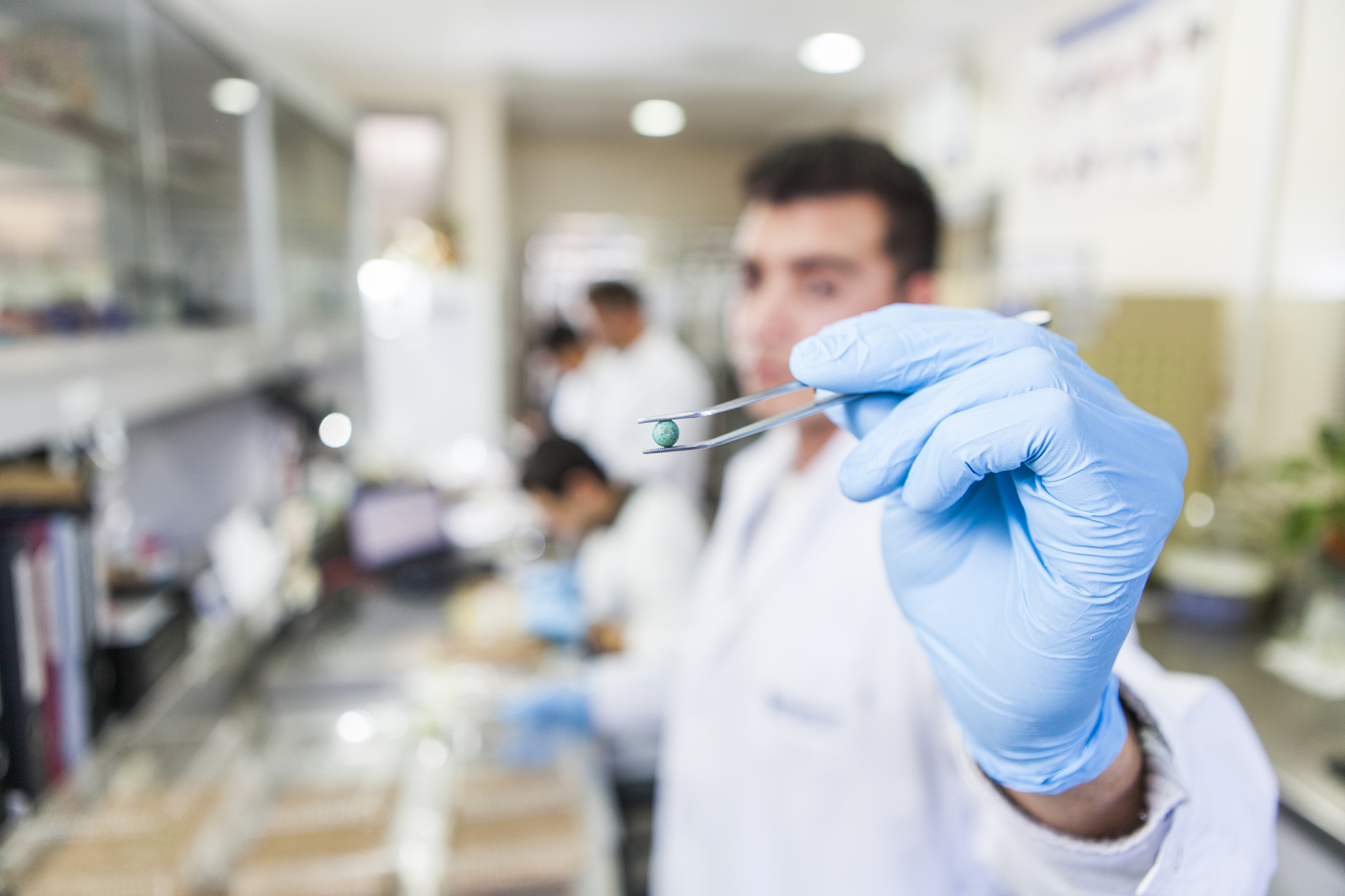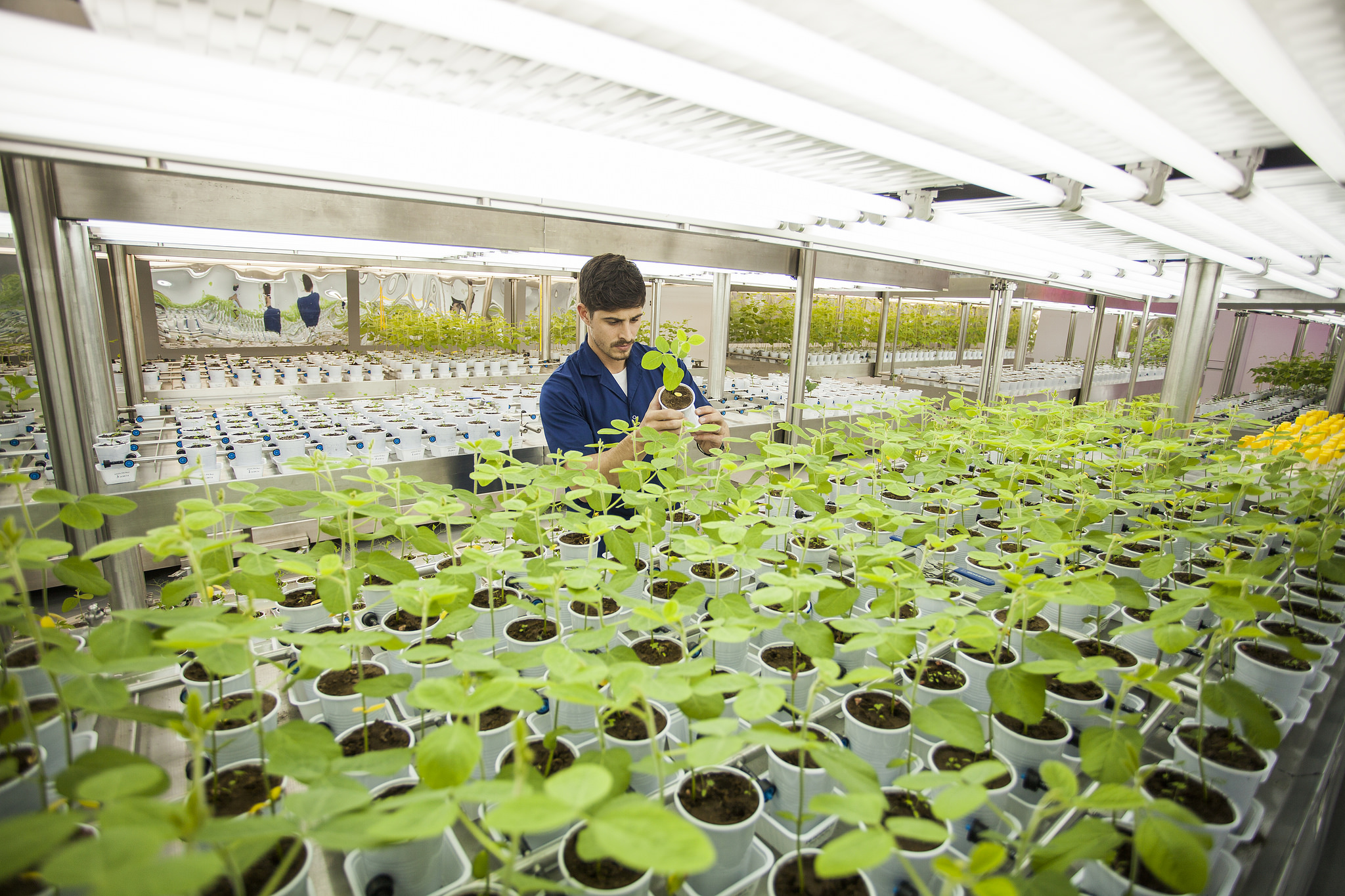Argentina
August 9, 2021
Rizobacter, a leading biological company, stands out for the research applied to inoculants, a key input for sustainable agriculture.
An inoculant is an industrial biopreparation developed to keep selected microorganisms alive and active. These microorganisms, called rhizobia, can fix atmospheric nitrogen in legumes. The use of inoculants, known as inoculation, is a key practice aimed at achieving good yields while taking care of the soil. The purpose of inoculation is to deliver selected rhizobia in large quantities and in an optimal physiological state to the roots of legumes at an early stage, when they generate structures called nodules and fix nitrogen from the air, replacing in most cases the application of synthetic nitrogen fertilizers.
A key factor in the development of inoculants is the selection of specific strains with a high biological nitrogen fixation (BNF) capacity. Of equal or greater important is the industrial process for making these bacteria viable over time in a container, where they remain ready for use. Inoculants can be applied to seeds or as an in-furrow treatment, being the most popular in use today. The global inoculant market is estimated to reach US$490 million in 2021, according to provisional data supplied by DunhamTrimmer.

Market Leader
Rizobacter is a company strongly focusing on biologicals, as well as a leader in the inoculants market, a key input for the development of legumes, as it can maximize biological nitrogen fixation. This natural process, which is achieved when the specific bacteria act on the roots of plants infecting and forming nodules, is the second most important process that occurs on Earth after photosynthesis. In this way, legumes can capture, from the air, between 40% and 80% of the nitrogen required for their entire production cycle. This process offers sustainability to farming systems, since it avoids exclusive dependence on the nitrogen reserves of the soil or chemical fertilizers while generating an excellent return on investment. Additionally, the fixed nitrogen can, in some cases, have a residual effect on the following crop. The maximization of the BNF is undoubtedly an important tool for farmers, enabling them to practice agriculture with a lower carbon footprint, as it reduces the use of chemical fertilizers without sacrificing productivity.
Strong R&D Investment
Rizobacter has been researching and developing the most advanced inoculant technologies, whether solid or liquid, for the past 44 years. Each year, it invests 30% of its profits in promoting new research and development projects to respond to diverse market needs. This business policy and a strong focus in biologicals enabled it to innovate at a higher rate than its main competitors. The company's differentiation in the inoculant business resides in its formulation technologies, which encompass the entire industrial process to obtain a product with previously selected strains, (due to their BNF capacity), in high concentrations and in excellent physiological conditions, ready for use and in a package that maximizes survival.
Inoculant Technology Portfolio
Within Rizobacter’s research lines, achieving the higher survival and efficiency rates of rhizobia are key goals. The so-called Osmo-Protection Technology (TOP or OPT) is noteworthy, as it facilitates the high metabolic and physiological performance of the bacteria on which the inoculant is based, enabling them to better adapt to the diverse agricultural environments and adverse situations during application. Products, such as Rizoliq TOP® and Osmium®, contain this technology, allowing better pre-treatment and, consequently, extra flexibility during sowing.
Rizobacter also developed the first inoculant range utilizing bio-induction technology whose flagship product is Signum®. Bio-induction generates molecular signals that activate in advance metabolic processes in the relationship between the rhizobia and its host, resulting in earlier nodulations even under suboptimal situations. Earlier nodulation results in better locations for the nodules on the main roots and a greater potential for the fixation of atmospheric nitrogen. In the upstream segment, the line of long-life inoculants (LLI – Long-Life Inoculants) has revolutionized seed treatment, by enabling seed companies to treat seeds in advance before sowing, with sufficient time to cope with distribution logistics. The technology used in these inoculants allows the upstream application of rhizobia along with fungicides, insecticides, biostimulants and polymers on the seed, improving the sowing operation, crop establishment and achieving an early BNF. Through this technology, seed companies can offer high quality ready-to-use products.

The Rizoliq LLI ® brand, present in products for chickpea, peanut and soybean, has become a reference in this segment. Unique product features in coordination with the unmatched pre and post-sales support of the Rizobacter team are the drivers for the success of this technology. Improvements in the manufacturing and formulation processes due to the HC-High Concentration technology will ensure a lower application rate and the highest bacterial concentration on seeds. This improvement is in response to a global trend in the seed treatment market, which involves the application of more products on seeds. Rizobacter's constant investment in research enabled it to develop the HC formulation, comprising a range of specific active ingredients, with the fundamental constituent being disaccharide, adding to a new bacterial multiplication.